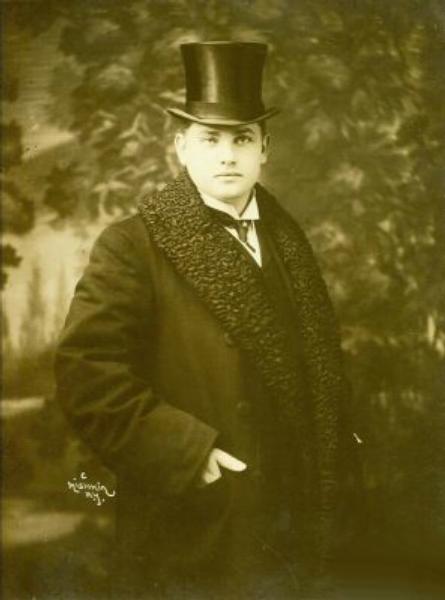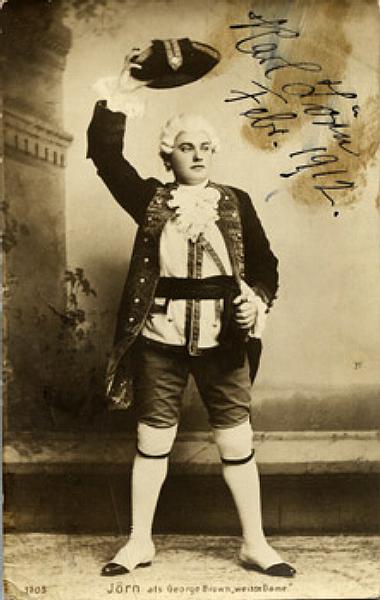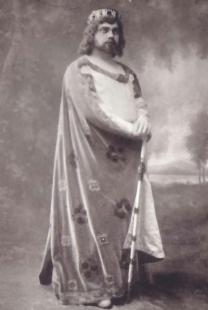Karl Jörn
5 January 1873 Riga – 19 December 1947 Denver
I wish to thank Helmut Krautschneider for the pictures.
In RA format
In RA format
In RA format
I would like to thank Thomas Silverbörg for the picture (bottom) and recordings.
The majority of the citizens of Riga, in the late 19th century, were Germans; Jörn was one of them. He
was born into a poor family (his father was a cobbler), and it was only with the help of a patron that he could afford to study
voice. He made his debut as Lyonel in Freiburg in 1896. He went on to Zürich, Hamburg (1899–1902), and the Berlin
Court Opera (1902–08), where he was already really famous, and the favorite singer of Emperor Wilhelm II. Between 1905 and
1908, he was a regular guest at Covent Garden. In 1908, he was hired by the Metropolitan Opera, where he made his debut as
Stolzing. Until 1914, he sang 189 performances at the Met: Tannhäuser, Jeník, Tamino, Faust, Massenet's des Grieux,
Froh, Siegmund, young Siegfried, Lohengrin, Parsifal, Châteauneuf, Turiddu, Canio, Königssohn, Hoffmann and the
Italian Singer.
In 1914, he went briefly back to Berlin and created Parsifal at the Deutsche Oper; even Emperor Wilhelm tried to convince him to
stay, but in vain: in 1916, Jörn left for the US, and he left for good. He gave up his career, became a speculator, and
lost all his money. After that, he lived in Denver as a voice teacher.
When Johanna Gadski toured the US with her German Opera Company, she remembered Jörn, and invited him to join her troupe.
That way, he gave a comeback and had great success as Tristan, Siegmund and Siegfried (1929–31). From 1932, he taught
voice in New York City; later, he moved back to Denver.
Reference: Kutsch & Riemens
|


